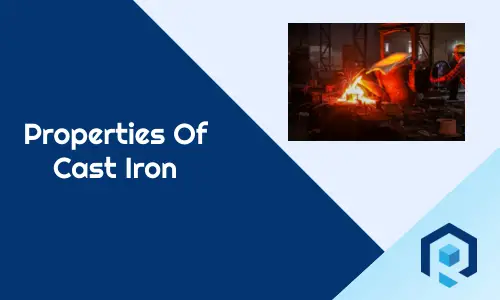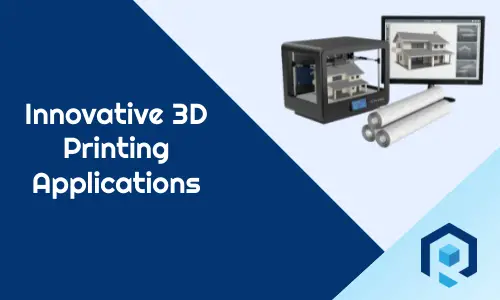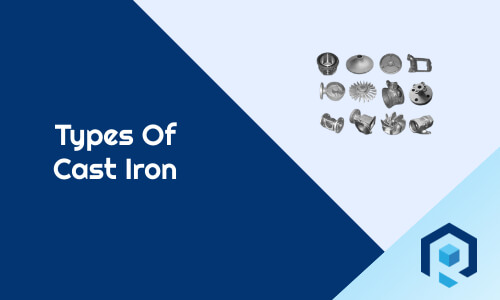A Laser Engraver is a tool specially designed for cutting, etching, marking, and engraving on hard material surfaces. Laser technology is used to remove the material as other traditional processes do not work well on hard surfaces.
Let’s learn more about laser engraver and the laser engraving process in this article.
What is Laser Engraver?
Laser engravers are specifically intended to focus laser light to stamp wood, metal, glass, or other materials with a predetermined engraving—often images or writing. The machine uses lasers to generate concentrated heat that removes the top layer of material from an item, cutting it to create the desired design.
![Laser Engraver [ Laser Engraving Machine] 1 laser engraver](https://www.riansclub.com/wp-content/uploads/2022/07/laser-engraver.jpg)
Mechanism of Laser Engraving?
Laser engraving is the technique of deliberately eliminating small layers of material, resulting in visible traces on the treated surface.
The laser-material interactions can be diverse depending on the materials used in them. Ablation is the primary mode of action on hard surfaces, where the focused beam of a laser breaks apart small particles. Engraving can go deeper than laser marking, which is normally shallower.
To get a high-quality mark, you must pay close attention to the lasers you use. Short bursts of high-quality laser pulses are preferred for making a clear mark because they may transfer substantial quantities of energy without melting the material.
Types of Laser Engraving:
Cutting Engraving:
A laser-cutting method creates the desired pattern on the material’s surface by first decomposing and expressing the pattern in many line forms. It results in the pattern represented by the cutting line.
Concave Engraving:
Cut away the pattern part, and leave the material’s surface as it is for the part around the pattern. There are two cases here. The first example is the same cutting force for each point on the pattern. The outline shape primarily reflects the etched pattern.
The second case is considered based on the pattern’s distribution of light and dark and contrast. The “dark” part of the pattern is cut more, and the “bright” part of the pattern is cut less or not.
While the former is better suited for patterns based on appearances, such as characters, animals, plants, and other patterns, the latter is better suited for patterns with finer details, such as characters’ expressions.
Convex Engraving:
Although the cutting force at each place is the same in concave die engraving, this engraving procedure cuts the material around the design. No material is cut from within the pattern itself.
This engraving process can express text, outlines, and other visual elements. Material removal in the latter two engraving processes occurs by cutting a linear groove each time the laser head moves over a portion of the cut surface. O. 05-0.5mm is a common range for the spacing between adjacent slots.
For these two types of engraving, the area-forming material must be removed using multiple linear cuts for these two types of engravings. When using concave die engraving, it’s important to remember that the depth and size of the groove might fluctuate on the same cutting line depending on what’s required.
Application of Laser Engraving
- Because of this versatility, laser engraving is used in so many industries.
- Laser engraving technology is frequently employed in manufacturing to engrave barcodes on various parts. In addition to barcodes, the engraving process frequently employs other identifiers, such as QR codes.
- Engraving is also commonly utilized for awards or trophies to achieve a clear engraving. For ornamental markings or letterheads, Laser Engraving is another option.
- The laser is also used in the jewelry industry because of its precision in engraving operations. Laser engraving is commonly used to label these components to make identification quick and simple.
Materials used for Laser Engraving
- Jewelry
- Coated metals
- Acrylic
- Glass
- Plywood
- Wood Parts
- Thermoplastics
Laser Engraving Machine
There are a variety of different materials that a laser engraving machine can mark. Because of its low operating costs, light weight, mobility, and ease of use, laser engraving is an attractive option.
A low-cost, quick prototype laser engraving machine is created in this work. GFRP composites, plastics, wood, cardboard, etc., have achieved the desired profile, contour, information, and varied drawings. Furthermore, a new laser engraving system has been designed that is both precise and efficient.
Laser Engraving Machines are quite heavy. And you need heavy equipment shipping for laser engravers.
![Laser Engraver [ Laser Engraving Machine] 2 laser engraving machine](https://www.riansclub.com/wp-content/uploads/2022/07/laser-engraving-machine.jpg)
Working Principle of Laser Engraving Machine
A laser engraver machine has three major components: a laser, a controller, and a surface. The laser is a drawing implement. The controller may trace patterns on a surface using the laser beam, which controls the laser beam’s intensity, speed of movement, and spread.
Laser etching exposes the material to extreme heat as the laser beam strikes it. The material evaporates or burns depending on the exposure period, which alters the hue and provides a contrast.
Laser engraving results in a durable and scratch-resistant surface. On the focal plane of the optical system, the point at which the laser beam meets the surface is commonly referred to as the focus point.
Laser optics travel in two dimensions, guiding the laser beam to create vectors on the workpiece (surface) in this laser engraving equipment.
Selection of Laser Engraving Machine
The following factors to keep in mind while purchasing a laser engraving machine:
i) Type of Materials for Engraving:
The laser engraver to buy is determined by the materials you worked with. For engraving, a variety of materials are available. Among the materials are metal, acrylic, paper, plastic, and wood. It’s impossible to use every piece of technology on every material. Choose one that is compatible with your workpiece as a result.
ii) Level of Accuracy:
A compass is less precise than a square instrument. Having additional spindle power makes a machine more precise. The precision of a machine is determined by the skill and expertise of the technician who assembles it. The more efficient a machine is, the more accurate it will be.
iii). Replacement of Parts:
It’s a good idea to double-check the device’s parts availability if it fails. It doesn’t matter what machine you buy; it will eventually break down. Regardless of how attentive you are, there may come a moment when you will need to replace some parts. Make sure you can acquire the parts quickly.
iv) Maintenance:
It is an important consideration when making a purchase. The frequency with which the equipment must be serviced must be known to you. Check to see if it’s something you can accomplish yourself or if you’ll require a professional.
v) Budget:
It is one of the most critical considerations when purchasing an engraving machine. As a result, the type of machine you can afford is determined by your budget. Your budget is a crucial decision-making element, even if the machine’s price does not necessarily imply its quality.
Types of Laser Engraving Machine
i) CO2-Based Laser Engraving Machine:
This type of Laser engraver is used for engraving jewelry, nameplates, rubber stamps, rating plates, thermoplastic materials, etc.
ii) Fiber-based Laser Engraving Machine:
These machines can engrave metal, plastic materials, and anodized aluminum.
Iii) Green Laser Engraving Machine:
Green laser engravers can mark on plastic, glass, ceramic and reflective materials (copper, silver, and gold).
iv) Hybrid Laser Engraving Machine:
These machines are used for engraving organic materials and metals.
Advantages of Laser Engraving Machine
- A primary advantage of this engraving technique is that the laser beam does not directly contact the material to be engraved. Instead, the laser’s heat is used to accomplish the task.
- Safety is a major concern for the device’s users and customers. Because it eliminates the need for people to be exposed to hazardous chemicals when doing manual tasks, the device also protects the environment. As you have access to a computer, you can use it from afar.
- Lasers are less harmful to the environment than other technologies because they don’t require the use of chemicals. It accomplishes this both during and after the engraving process is complete. Because so much of the material is vaporized, the process generates very little waste.
- Changing materials and depths can be done quickly and easily to generate different results.
Conclusion: Laser Engraving Machine
Machines have moved from manual to automatic control due to increasing globalization and economic progress. The laser engraving machine uses a computer numerical control (CNC) to write and read G-code instructions to drive to produce components with the required material removal rate. With the help of G-codes, a machine can work without much human intervention. A rapid and clean pace of work is being maintained.
You may also like to read: Types Of CNC machine
References
- 1. Claire. (n.d.). 3 Basic Types of Laser Engraving | STYLECNC. STYLECNC; www.stylecnc.com. Retrieved July 6, 2022, from https://www.stylecnc.com/blog/laser-engraving-types.html
- 2. Laser Engraving: A ultimate guide. (n.d.). Sculpteo; www.sculpteo.com. Retrieved July 6, 2022, from https://www.sculpteo.com/en/3d-learning-hub/laser-cutting/laser-engraving-a-ultimate-guide/
- 3. How Does Laser Engraving Work?: The Ultimate Guide (2022) – Dayspring Pens. (2021, May 12). Dayspring Pens; www.dayspringpens.com. https://www.dayspringpens.com/blogs/the-jotted-line/how-does-engraving-work
- 4. Laserax. (2021, July 16). How Does Laser Engraving Work? | Laserax. Laserax; www.laserax.com. https://www.laserax.com/blog/how-laser-engraving-work
- 5. GmbH, T. L. (n.d.). Laser engraving | Trotec Laser. Trotec Laser GmbH; www.troteclaser.com. Retrieved July 6, 2022, from https://www.troteclaser.com/en/laser-applications/laser-engraving
- 6. Laser engraving – Wikipedia. (2010, July 1). Laser Engraving – Wikipedia; en.wikipedia.org. https://en.wikipedia. 1. (2021, April 19). 7. Tips for Buying a Laser Engraving Machine. Parenting Healthy; www.parentinghealthy.com. https://www.parentinghealthy.com/tips-for-buying-a-laser-engraving-machine/org/wiki/Laser_engraving



